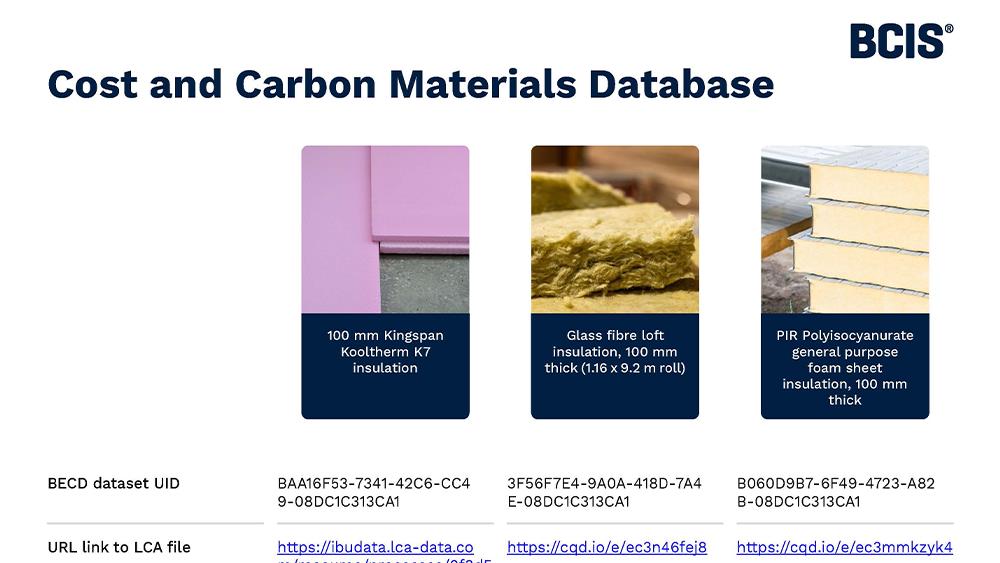

The Building Cost Information Service (BCIS) has launched a cost and carbon materials database, which aims to help the built environment sector make better informed decisions for their budgets and the environment.
The new database is fully compliant with the Royal Institution of Chartered Surveyors' (RICS) whole-life carbon assessment standard, which is set to become the world-leading standard for consistent and accurate carbon measurement in the built environment.
The BCIS Cost and Carbon Materials Database includes the costs of a growing list of more than 9,200 common building, civil engineering and specialist engineering material resources with UK average merchant prices.
The database also outlines the effects of inflation, past and forecast, on the cost of those materials and includes detailed carbon credentials for a representative material, where available.
For BCIS, the database is a natural progression of providing both cost and carbon data to the industry, to bring them together in a consistent, easy-to-understand and simple-to-use format, which empowers cost professionals to make more informed choices, whether they are at the estimating, procuring, benchmarking or auditing stage.
The BCIS Cost and Carbon Materials Database will enable the industry to consider if they need to pay more for building materials with lower embodied carbon values.
It will also give professionals the ability to compare multiple product options side by side, alongside a twelve-month inflation forecast on those costs, which could influence decisions.
The database will also enable the tracking of changes in cost and carbon values as the project progresses.
Materials have also been assigned a representative environmental product declaration (EPD) where one is available. Where there is an inconsistency because different units of measure have been used in the EPD, BCIS provides the calculation and converted carbon value to use.
With the ability to compare up to four materials side by side, users can properly evaluate the attributes of each material, as well as logistical considerations, such as size and weight, and the practicalities of transporting materials onto site.
BCIS CEO James Fiske said: “I’m very proud that we can offer this new service to the industry. It’s the only database of its kind available and will be an essential tool in helping the built environment’s drive towards net zero.
“Having led on the development of the Built Environment Carbon Database (BECD), a free industry repository for the sharing of product and project carbon data, it really struck us how inconsistent the data can be.
“It’s all well and good saying that construction firms should be calculating and reporting on embodied carbon, because we know we have a mountain to climb in terms of reducing emissions from the built environment, but the practicalities of those calculations and trying to sift through the data to find what you need is far from straightforward.”
Fiske added: “When it comes to actually being able to make informed decisions, so you can properly assess the monetary and environmental costs of using one material or product over another, you can be tripped at the first hurdle because the units of measure for what you’re comparing aren’t even the same.
“The Cost and Carbon Materials Database is our first step to making those decisions much easier. As well as looking up current costs, which will be updated monthly, we also provide percentages for past inflation and a twelve-month forecast, so you can see the bigger picture.”